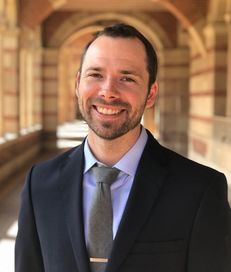Natalia Dias Ferrao Levy
2017 Donald Edward Bragg & Diane Sims Bragg Scholarship Recipient
Biography: Natalia was born and raised in Rio, Brazil and was the only sibling of four to decide to study abroad. When leaving Brazil, she was certain of only a couple things: that she made the right decision and that she wanted to study Business Economics. Her favorite courses at UCLA are astronomy, finance, and – mostly because of the professors – accounting. At UCLA, Natalia became involved with the Brazilian Student Association, an international business association that helps Brazilian students abroad connect and advance their careers. Her experience in college helped her realize that what moved and fascinated her were the human connections: inspiring professors and friends from completely different backgrounds. Now at her final year at UCLA, Natalia aspires to work in finance, do a whole bunch of traveling and always prioritize exchanges with great individuals.
Future Plans: Natalia plans to work as a financial analyst in New York or Los Angeles. She wishes to get a CFA and specialize in international capital markets, such as Latin American and Asia-Pacific. Natalia wishes to add value by understanding complexities outside the US and open doors to new scopes of investments. Because of her entrepreneurial side, she also hopes to have her own business venture in something she is passionate about (maybe a Brazilian acai shop in Los Angeles). In the long term, Natalia hopes to work for a philanthropic cause in Brazil, helping low-income Brazilians pursue education and high-skilled careers.
What does this scholarship mean to you?: For me, this scholarship means a few things. It means there are people in the world that believe in encouraging others. It means that hard work pays off. It means that I can remove a part of the financial weight on my family. I am immensely grateful for being the recipient of the 2018 Donald Edward Bragg & Diane Sims Bragg Scholarship. I am humbled that someone looked at my achievements and saw something worthwhile. Receiving the award email was definitely a moment in time I felt the world was smiling back at me. Scholarships represent something that always bring the best in people: others believing in you. I hope one day I can do the same for someone else.



